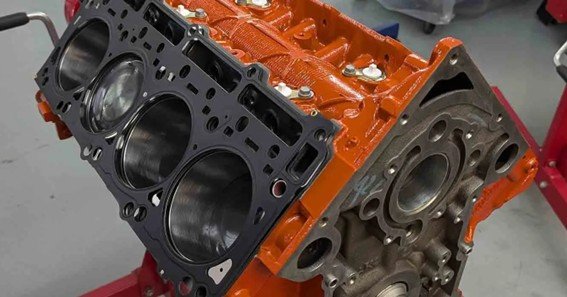For automotive enthusiasts and mechanics alike, understanding the proper specifications is key to a successful engine rebuild. The buick century cylinder head bolt tightening torque 3.1l lbf/ft is a critical parameter that ensures proper sealing and engine performance. In this blog post, we’ll explore what this torque specification means, why it’s important, and the best practices for achieving the correct tightening torque on your Buick Century’s cylinder head bolts.
Understanding Cylinder Head Bolt Torque
Why Torque Specifications Matter
Torque specifications for cylinder head bolts are vital for several reasons:
- Even Clamping Force: Ensures the cylinder head is evenly clamped to the engine block, which is essential for sealing the combustion chamber and preventing leaks.
- Preventing Bolt Stretch: Correct torque prevents over-tightening, which can stretch or break the bolts.
- Engine Performance: Properly torqued bolts maintain the integrity of the engine assembly, impacting overall performance and longevity.
The 3.1L Lbf/ft Specification
For the Buick Century, the recommended tightening torque for the cylinder head bolts is 3.1L lbf/ft. This specification may seem low compared to other engines, but it is designed specifically for the materials and design of the Buick Century engine components. Always refer to your vehicle’s service manual to verify these values, as slight variations may exist based on the engine version or model year.
Best Practices for Achieving the Correct Torque
- Clean and Inspect Bolts: Before installation, clean all bolts and inspect for any signs of wear or damage. Replace any that show deformation.
- Use a Calibrated Torque Wrench: To ensure accuracy, use a high-quality, calibrated torque wrench set to the 3.1L lbf/ft specification.
- Follow a Stepwise Pattern: When tightening, use a sequential or star pattern. This method helps distribute the load evenly across the cylinder head.
- Gradual Tightening: Tighten bolts gradually in multiple passes. Begin with a low torque setting and gradually increase to the final specification.
- Double-Check Measurements: After reaching the final torque value, re-check a few bolts to confirm consistent torque across the assembly.
FAQs
1. Why is the torque specification for the Buick Century cylinder head bolts set at 3.1L lbf/ft?
This specific torque value is designed for the unique materials and design of the Buick Century engine. It ensures an even clamping force without over-stressing the bolts, which is crucial for maintaining engine integrity and performance.
2. What tools do I need to properly tighten my cylinder head bolts?
You will need a calibrated torque wrench capable of measuring in lbf/ft, along with a suitable socket set. Using quality tools ensures accurate and reliable results.
3. Can I tighten the bolts in any order?
It is best to follow a stepwise or star pattern when tightening the bolts. This method helps distribute the clamping force evenly, preventing warping or uneven pressure on the cylinder head.
4. What are the risks of not adhering to the 3.1L lbf/ft torque specification?
Failure to meet the recommended torque can lead to improper sealing of the cylinder head, resulting in combustion leaks, reduced engine performance, or even engine damage. Over-tightening can stretch or break the bolts, while under-tightening may lead to loose fittings.
5. Is it necessary to recheck the torque after initial installation?
Yes, rechecking the torque on a few bolts after the initial installation is a good practice. This ensures that all bolts are uniformly tightened and maintains the integrity of the cylinder head assembly over time.
Conclusion
The buick century cylinder head bolt tightening torque 3.1l lbf/ft specification is a critical factor in ensuring the proper assembly and performance of your Buick Century engine. By understanding the importance of precise torque, using the correct tools, and following best practices, you can achieve a secure and lasting cylinder head installation. Whether you’re a seasoned mechanic or a DIY enthusiast, adherence to these guidelines will help you maintain engine performance and longevity.










